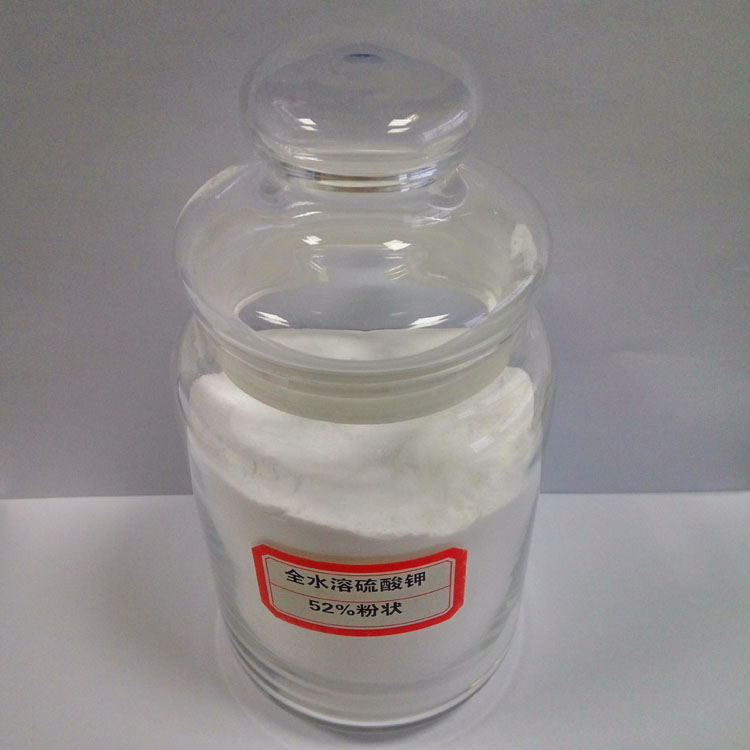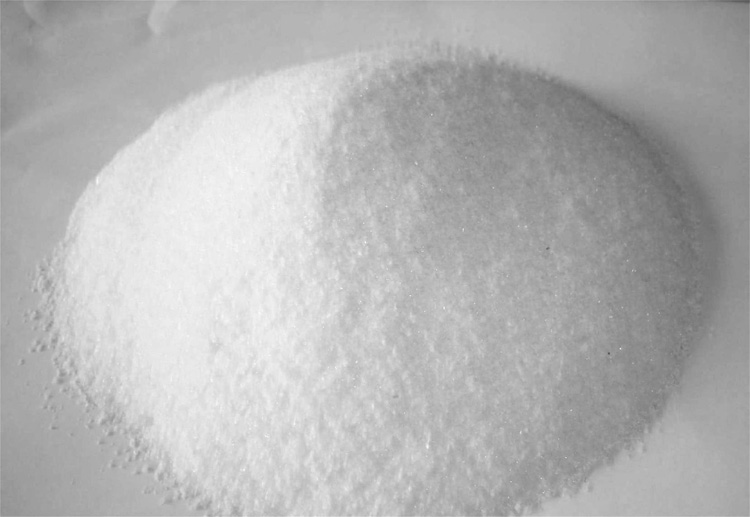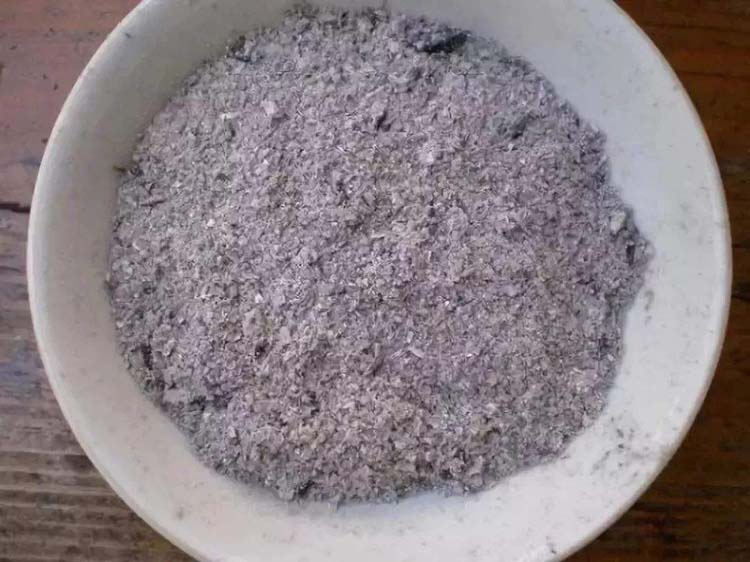These potash fertilizers can be used for vegetables
VIEWS: times Release Date:2020-06-27

Containing 48%-52% of K2O and 18% of S2, the commercial fertilizer is light gray or yellowish. It is easily soluble in water. It is a high-concentration quick-acting potash fertilizer. It has low hygroscopicity, is not easy to agglomerate, and is easy to store and transport. It is a chemically neutral and physiological acid fertilizer.
Suitable for all kinds of crops and soil, especially suitable for avoiding chlorine, sulfur-loving crops, such as potato, cruciferous crops, onions and garlic. On acid soil or long-term application, calcium magnesium phosphate fertilizer, phosphate rock powder or other alkaline fertilizer should be applied to prevent soil acidification and compaction. It is applied to sulfur-deficient soils and vegetables that require more sulfur, such as onions, leeks, and garlic. The effect is good, so it should be used first on crops that are sensitive to chlorine and potassium and sulfur. It is not suitable for application in aquatic vegetables. When applied on neutral and calcareous soil, organic fertilizer should be applied together. Sandy soil with poor water and fertilizer retention capacity should be combined with base fertilizer and top dressing and applied separately.
It can be used as base fertilizer, top dressing, seed fertilizer and foliar fertilizer. It should be applied early for top dressing. In the case of base fertilizer and top dressing, the centralized fertilization method of strip application, furrow application and hole application shall be adopted, and the application amount shall be 7.5-15kg/mu. The amount of seed fertilizer is 1.5-2.5kg/mu. The concentration of foliar fertilization is 2%-3%.
2. Potassium chloride.

The K2O content is 60%, and the commercial fertilizer content is 50%-60%, which is white or light yellow or light brick red crystal. Soluble in water, hygroscopic, easy to clump after long-term storage. It is a chemically neutral and physiological acid fertilizer, suitable for all kinds of soil except saline-alkali soil. In acidic soils or soils where a large amount of potassium chloride has been applied for a long period of time, attention should be paid to the application of organic fertilizers, calcium magnesium phosphate fertilizers, phosphate rock powder or other alkaline fertilizers (such as lime and lime-like substances). Potassium chloride should be applied on neutral soil for a long time, and calcium fertilizer should be used. Potassium chloride should be applied reasonably or in a small amount according to crop and soil conditions on melon and fruit vegetables and under protected cultivation conditions. It is strictly forbidden to apply potassium chloride and ammonium chloride-made double-chloride fertilizer. When applied on heavy sandy soil, organic fertilizer should be applied in combination, and it should be applied in small quantities in batches. During the dry season, the amount of potassium applied to the soil needs to be increased appropriately.
Can be used as base fertilizer, top dressing, not suitable for seed fertilizer. When used as a base fertilizer, it should be mixed and mixed with organic fertilizer and phosphate rock powder on neutral and acid soils. It should be applied early for top dressing, the application rate is generally 5-15kg/mu. The application amount of base fertilizer can be slightly more than top dressing. Chlorine-free crops such as potatoes are not suitable for application. Potassium fertilizers such as potassium sulfate that do not contain chloride ions can be used.
3. Plant ash.

It is the residual ash after burning straw, corn stalk, cotton stalk, rape stalk, litter, chaff and other plant residues. Mainly contains potassium, phosphorus, calcium, magnesium, sulfur, silicon and various trace elements, but mainly potassium and calcium. The form of potassium is mainly potassium carbonate, followed by potassium sulfate. It is a quick-acting alkaline potash fertilizer. Avoid blisters during rain. It should not be mixed with ammonium nitrogen fertilizer, water-soluble phosphate fertilizer and fully decomposed organic fertilizer (such as human and animal urine). It is rich in calcium and cannot be mixed with or mixed with superphosphate. It is suitable for all kinds of soil except saline-alkali soil, especially for acid soil.
It can be used as base fertilizer, top dressing and cover seed fertilizer, and can also be used for top dressing outside roots. The dosage is 50-100kg/mu. Before application, a small amount of water should be added to make it moist. When used as a base fertilizer, it should be applied intensively, using furrow or hole application, about 10cm deep, and cover the soil after application. For top dressing, foliar spray can be applied. When used as a cover fertilizer, it can be used as a vegetable bed cover. Using 1% grass and ash water as the extra-root fertilizer, it can also prevent aphids.
Previous : Best NPK fertilizer for peach tree
Next : The difference and connection between water-soluble fertilizer and foliar fertilizer, drip irrigation fertilizer and flush fertilizer
Latest News
- The company overcame difficulties and won a "good start" in the first quarter ...2022-03-28
- Safe Production ...2022-03-28
- first-line collection ...2022-03-26
- Huaqiang News ...2022-03-26
- Huaqiang Chemical Strong Agriculture Project ...2022-03-25
- huaqiang news ...2022-03-24
- winning unit ...2022-03-22
- Huaqiang News ...2022-03-21
Related Information
- The best fertilizers for fruits and crops ...2020-05-26
- Huaqiang Chemical Group NPK fertilizer pdf ...2020-04-01
- Humic Acid Fertilizer ...2019-12-31
- Bulk Blending Fertilizer ...2019-12-27
- Water Soluble Fertilizer ...2019-12-08
- NPK Fertilizer ...2019-12-02
- Potassium Sulfate Fertilizer ...2019-11-30
- Urea Fertilizer ...2019-11-21
MESSAGE
Our sales staff will be the first time to get in touch with you,to provide you with the latest price.
-
Chemical Products
-
Compound fertilizer
-
Contact Us
Huaqiang Chemical Group Stock Co.,Ltd.
No.1 Jinping Avenue, Dangyang , Hubei , China
Http://www.hq-chemical.com
info@hq-chemical.com
Tel:+86 717 3431866
Mobile: +86 18627120543
© Copyright 2021 Huaqiang Chemical Group Stock Co.,Ltd. All Rights Reserved



